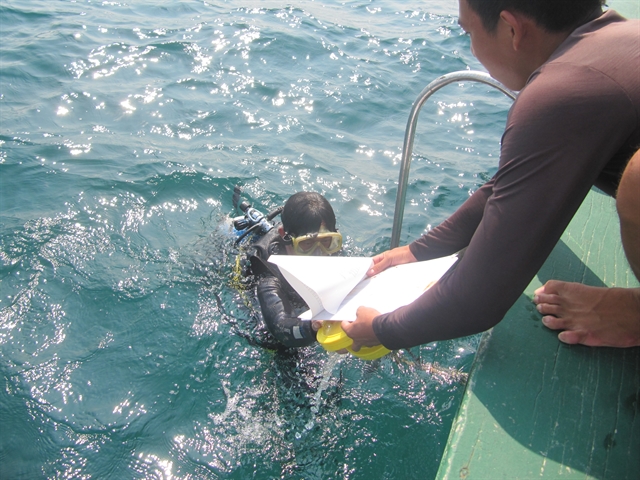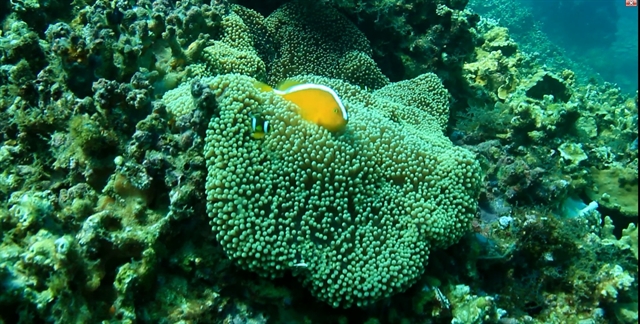Less tourism activities and waste around the Cham Islands – a world biodiversity reserve site – would help the marine ecosystem in waters off the islands recover after the two-month social distancing order due to the COVID-19 pandemic.

A diver from the Cham Island Maritime Protected Area completes a check on coral reefs in waters off the islands. — VNS Photo Cong Thanh
Experts and staff from the Cham Island Maritime Protected Area (MPA) have made the statement after returning from a regular inspection on coral reefs and ecosystems at eight sites off the islands last week.
They said over-tourism resulted in degradation of the ecosystem off the islands in recent years.
During the two-month social distancing order, the islands, a popular attraction welcoming 2,000 tourists each day, did not record any diving tours or boat trips.
“Coral reef coverage was well developed, but we have been collecting detailed information for a final report on coral reefs. However, many bottom feeders were recorded in coral reefs, especially holothurian and sea urchins,” said Nguyen Thi Thao, a worker at the MPA.
“The number of fish species living in the coral reefs was less than in previous checks.”

Coral is well developed in waters off the Cham Islands. Limited human activities have helped the marine ecosystem recover. — Photo courtesy of Cham Islands MPA
Vice director of the MPA, Nguyen Van Vu suggested that the islands reduce the number of visitors from a maximum of 3,000 to 1,000 each day to reduce pressure on the marine ecosystem.
He said the islands need a break for marine species and seafood resources to recover.
The islands often receive 5 tonnes of waste each day, which mostly was in-organic waste from tourists, not including waste water and fresh water consumption as well as seafood and forestry products.
According to the MPA, more than 2,700 groups of coral species had been planted at 10 sites off the islands, and an area of 2,000sq.m of coral reef was developed following a coral reef restoration project in 2015-17.
The reserve covers more than 33,000ha, including 1,500ha of tropical forests and 6,700ha of sea, featuring a wide range of marine fauna and flora.
The islands are already overloaded, with a fleet of 152 boats including 145 speed boats travelling between Cua Dai Port in Hoi An and the Islands.
A report said the rapid increase of speed boats and fishing vessels was the main reason for 66 per cent of sea grass off the islands being destroyed between 2009-18.
The islands, 20km off the coast of Hoi An, which was recognised as a World Biosphere Reserve in 2009, is one of few places in Viet Nam successfully campaigning against plastic bags.